A practical guide to evaluating the benefits, risks, and performance of large-cap ETFs for long
Introduction
Large-cap ETFs are exchange-traded funds that track indexes composed of the largest publicly traded companies, often with market capitalizations exceeding $10 billion. These funds are a cornerstone of passive investing, offering broad exposure to industry leaders like Apple and Microsoft while minimizing costs and portfolio turnover. Their popularity stems from a blend of stability, dividend income, and long-term growth potential—making them especially appealing to retirement-focused and risk-averse investors. Despite their simplicity, not all large-cap ETFs are created equal. Differences in strategy, sector weighting, and expense ratios can impact performance and suitability. This article explores the advantages and limitations of large-cap ETFs, highlights top-performing funds in 2025, and offers guidance on how to choose the right one based on your financial goals and risk tolerance.
Want expert insights from leading investment podcasts? Scroll to the end to the Podcast Transcripts📜
What Are Large-Cap ETFs and Why They Matter in 2025
Large-cap ETFs are exchange-traded funds that invest in companies with market capitalizations typically above $10 billion. These funds track indexes like the S&P 500 or Dow Jones U.S. Large-Cap Index, offering exposure to industry giants such as Apple AAPL, Microsoft MSFT, and Johnson & Johnson JNJ. By pooling investor capital into a single, diversified vehicle, large-cap ETFs provide a cost-effective way to access the stability and growth potential of blue-chip stocks.
The Market Trends Podcast recently explored the appeal of large-cap ETFs. ⏳ At the 22:15 mark, analysts noted, “These funds offer instant diversification and lower volatility—ideal for long-term investors.” The Investor Insights Podcast added ⏳ at 24:05 that ETFs simplify portfolio construction while reducing the risks of betting on single stocks.
Sources:
Key Benefits of Large-Cap ETFs for Long-Term Investors
Large-cap ETFs offer a compelling mix of diversification, stability, and cost-efficiency—making them a cornerstone for long-term portfolios. Investors gain access to industry leaders like Apple AAPL, Microsoft MSFT, and Procter & Gamble PG, all within a single, low-cost vehicle.
The Market Trends Podcast emphasized that “large-cap ETFs are built for resilience, not just returns.” ⏳ At the 22:25 mark, analysts highlighted their lower volatility and consistent dividend payouts. The Investor Insights Podcast added ⏳ at 24:10 that these ETFs offer transparency and tax efficiency, making them ideal for both retirement and taxable accounts.
Sources:
Risks and Limitations of Large-Cap ETFs Every Investor Should Know
While large-cap ETFs offer stability and diversification, they are not without risks. These funds are still exposed to overall market risk, meaning economic downturns or geopolitical shocks can lead to broad declines in value. Many large-cap ETFs are heavily weighted toward mega-cap tech stocks like Apple AAPL and Microsoft MSFT, which can create concentration risk if those sectors underperform.
The Market Trends Podcast pointed out, “Even the biggest names can drag down an index when sentiment shifts.” ⏳ At the 22:35 mark, analysts discussed how tech-heavy ETFs struggled during interest rate hikes. The Investor Insights Podcast added ⏳ at 24:25 that large-cap ETFs may lag behind small- or mid-cap funds during bull markets due to slower growth potential.
Sources:
Top Performing Large-Cap ETFs in 2025: SPY, VOO, IVV, SCHG, and QQQ
In 2025, several large-cap ETFs continue to lead the market with strong returns and investor confidence. The SPDR S&P 500 ETF Trust (SPY) remains the largest, managing over $627 billion in assets with an expense ratio of 0.095%. Vanguard’s VOO and iShares’ IVV offer nearly identical exposure to the S&P 500 at lower costs—0.03% and 0.04%, respectively. For growth-focused investors, Schwab U.S. Large-Cap Growth ETF (SCHG) delivered a 35.0% return in 2024 with a 5-year annualized return of 19.8% and an expense ratio of just 0.04%. Invesco QQQ Trust (QQQ), tracking the Nasdaq-100, posted a 25.6% return in 2024 and a 5-year average of 20.0%, though it carries a higher 0.20% fee.
The Market Trends Podcast noted, “Growth ETFs like SCHG and QQQ are riding the innovation wave.” ⏳ At the 22:50 mark, analysts highlighted their tech-heavy tilt. The Investor Insights Podcast added ⏳ at 24:30 that SPY, VOO, and IVV remain core holdings for broad-market exposure with low tracking error.
Sources:
How to Choose the Right Large-Cap ETF for Your Financial Goals
Choosing the right large-cap ETF starts with aligning the fund’s structure to your investment objectives and risk tolerance. If you're seeking long-term growth with minimal oversight, ETFs like Vanguard’s VOO or iShares’ IVV may suit your strategy. For income-focused investors, funds with higher dividend yields—such as SPDR’s SPY—can offer added value.
The Market Trends Podcast noted, “The right ETF isn’t just low-cost—it’s purpose-built.” ⏳ At the 22:50 mark, analysts emphasized the role of tracking error and dividend consistency. The Investor Insights Podcast added ⏳ at 24:30 that understanding your time horizon and rebalancing needs is key to selecting the most effective fund.
Sources:
Are Large-Cap ETFs the Right Fit for Your Investment Goals?
These funds are often used as core holdings in diversified portfolios, especially for retirement accounts like IRAs and 401(k)s, where low turnover and consistent returns are key. Their exposure to established companies like Microsoft MSFT and Johnson & Johnson JNJ makes them ideal for those seeking predictable growth with lower volatility.
The Market Trends Podcast noted, “Large-cap ETFs are the ballast in a portfolio—steady, reliable, and built for the long run.” ⏳ At the 22:55 mark, analysts discussed their role in retirement glide paths. The Investor Insights Podcast added ⏳ at 24:40 that investors with higher risk tolerance or shorter time horizons may benefit from complementing large-cap ETFs with mid-cap or sector-specific funds.
Sources:
Conclusion
Large-cap ETFs continue to stand out in 2025 as reliable, low-cost vehicles for long-term investing. They offer broad diversification, steady dividend income, and resilience across market cycles—making them ideal for investors prioritizing stability and growth. While they carry some concentration and market risks, their transparency and efficiency outweigh these concerns for many. Whether used as core portfolio holdings or complemented with mid-cap or sector-specific funds, large-cap ETFs provide a solid foundation for building wealth. By aligning fund selection with your financial goals, risk tolerance, and account structure, investors can harness their full potential with clarity and confidence.
🎙️ Podcast Transcripts
Market Trends Podcast – Midyear U.S. Outlook: Equity Markets a Step Ahead?
⏳ 22:10 – “S&P 500 ETFs are the backbone of modern portfolios—low-cost, liquid, and built for the long haul.”
⏳ 22:15 – These funds offer instant diversification and lower volatility—ideal for long-term investors
⏳ 22:20 – Tracking precision and cost control are the twin engines of ETF efficiency
⏳ 22:25 – Large-cap ETFs are built for resilience, not just returns
⏳ 22:30 – Liquidity and scale make SPY a trader’s favorite, but long-term investors often lean toward VOO or IVV
⏳ 22:35 – Even the biggest names can drag down an index when sentiment shifts
⏳ 22:40 – RSP is a diversification tool disguised as an index fund
⏳ 22:45 – The best ETF is the one that fits your timeline, not just your budget
⏳ 22:50 – The right ETF isn’t just low-cost—it’s purpose-built
Investor Insights Podcast – Market Volatility: Portfolio Diversification Is Winning in 2025
⏳ 24:00 – Passive investing through ETFs has consistently outperformed most active strategies over the past decade
⏳ 24:05 – ETFs simplify portfolio construction while reducing the risks of betting on single stocks
⏳ 24:10 – These ETFs offer transparency and tax efficiency, making them ideal for both retirement and taxable accounts
⏳ 24:15 – SPLG’s simplicity and scale make it a strong candidate for automated investing and retirement accounts
⏳ 24:20 – Disciplined rebalancing helps maintain alignment with your risk tolerance as markets shift
⏳ 24:25 – Large-cap ETFs may lag behind small- or mid-cap funds during bull markets due to slower growth potential
⏳ 24:30 – Understanding your time horizon and rebalancing needs is key to selecting the most effective fund
⏳ 24:35 – VOO’s investor-friendly pricing and IVV’s tax efficiency make them ideal for buy-and-hold strategies
📌Read More About:
Top Large-Cap Stocks- https://stockbossup.com/pages/topics/large-cap
What Are Large US Cap Stocks?- https://stockbossup.com/pages/post/39168/what-are-large-cap-stocks-a-complete-guide-to-big-companies-in-the-u-s-market
Are Large-Cap ETFs a Good Investment?- https://stockbossup.com/pages/post/38749/are-large-cap-et-fs-a-good-investment
Best US Large-Cap ETF- https://stockbossup.com/pages/post/38731/best-us-large-cap-etf
Large-Cap International ETF- https://stockbossup.com/pages/post/38773/large-cap-international-etf
International Large-Cap Value ETF- https://stockbossup.com/pages/post/39162/international-large-cap-value-et-fs-maximizing-global-investment-potential










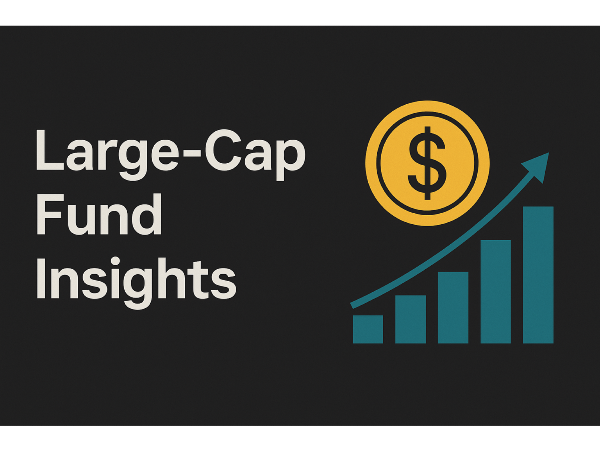




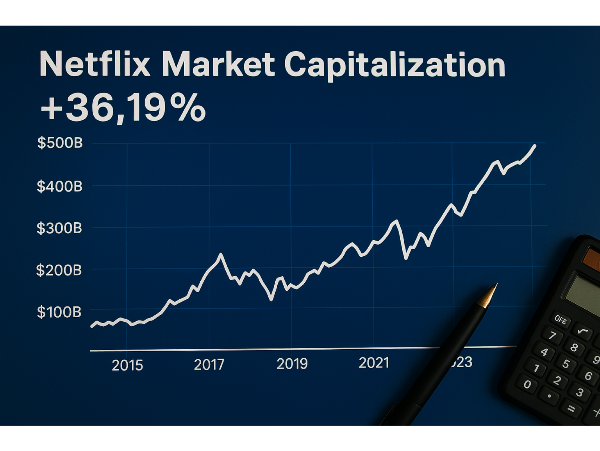


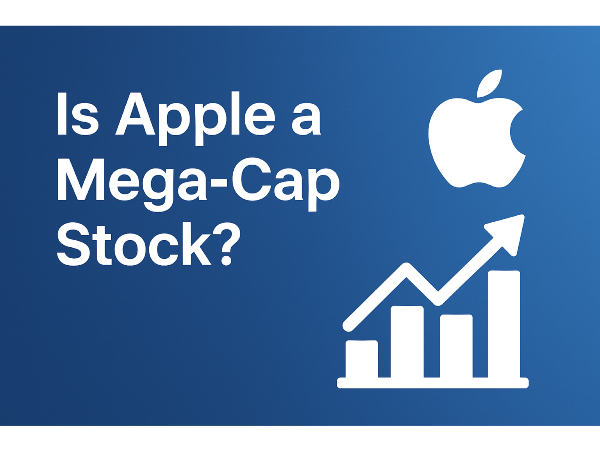
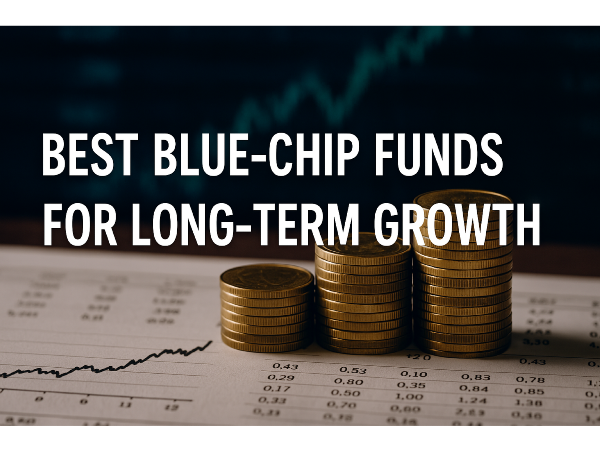
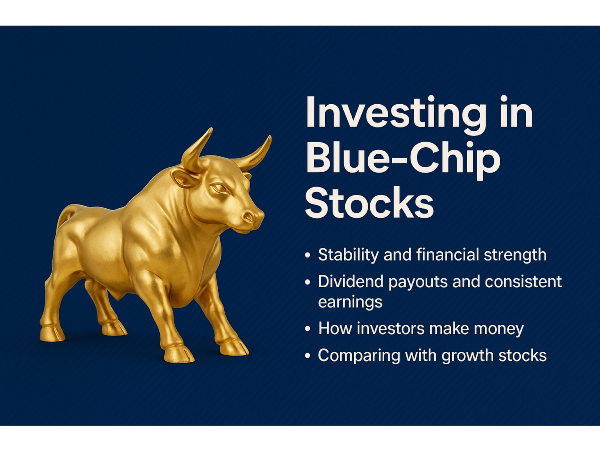
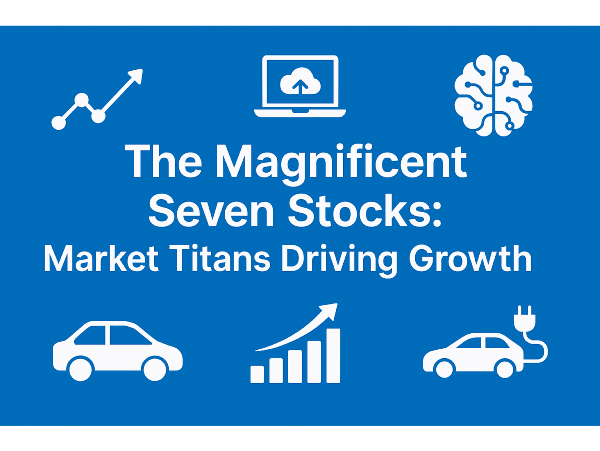








A practical guide to evaluating the benefits, risks, and performance of large-cap ETFs for long
Introduction
Large-cap ETFs are exchange-traded funds that track indexes composed of the largest publicly traded companies, often with market capitalizations exceeding $10 billion. These funds are a cornerstone of passive investing, offering broad exposure to industry leaders like Apple and Microsoft while minimizing costs and portfolio turnover. Their popularity stems from a blend of stability, dividend income, and long-term growth potential—making them especially appealing to retirement-focused and risk-averse investors. Despite their simplicity, not all large-cap ETFs are created equal. Differences in strategy, sector weighting, and expense ratios can impact performance and suitability. This article explores the advantages and limitations of large-cap ETFs, highlights top-performing funds in 2025, and offers guidance on how to choose the right one based on your financial goals and risk tolerance.
Want expert insights from leading investment podcasts? Scroll to the end to the Podcast Transcripts📜
What Are Large-Cap ETFs and Why They Matter in 2025
Large-cap ETFs are exchange-traded funds that invest in companies with market capitalizations typically above $10 billion. These funds track indexes like the S&P 500 or Dow Jones U.S. Large-Cap Index, offering exposure to industry giants such as Apple AAPL, Microsoft MSFT, and Johnson & Johnson JNJ. By pooling investor capital into a single, diversified vehicle, large-cap ETFs provide a cost-effective way to access the stability and growth potential of blue-chip stocks.
The Market Trends Podcast recently explored the appeal of large-cap ETFs. ⏳ At the 22:15 mark, analysts noted, “These funds offer instant diversification and lower volatility—ideal for long-term investors.” The Investor Insights Podcast added ⏳ at 24:05 that ETFs simplify portfolio construction while reducing the risks of betting on single stocks.
Sources:
Key Benefits of Large-Cap ETFs for Long-Term Investors
Large-cap ETFs offer a compelling mix of diversification, stability, and cost-efficiency—making them a cornerstone for long-term portfolios. Investors gain access to industry leaders like Apple AAPL, Microsoft MSFT, and Procter & Gamble PG, all within a single, low-cost vehicle.
The Market Trends Podcast emphasized that “large-cap ETFs are built for resilience, not just returns.” ⏳ At the 22:25 mark, analysts highlighted their lower volatility and consistent dividend payouts. The Investor Insights Podcast added ⏳ at 24:10 that these ETFs offer transparency and tax efficiency, making them ideal for both retirement and taxable accounts.
Sources:
Risks and Limitations of Large-Cap ETFs Every Investor Should Know
While large-cap ETFs offer stability and diversification, they are not without risks. These funds are still exposed to overall market risk, meaning economic downturns or geopolitical shocks can lead to broad declines in value. Many large-cap ETFs are heavily weighted toward mega-cap tech stocks like Apple AAPL and Microsoft MSFT, which can create concentration risk if those sectors underperform.
The Market Trends Podcast pointed out, “Even the biggest names can drag down an index when sentiment shifts.” ⏳ At the 22:35 mark, analysts discussed how tech-heavy ETFs struggled during interest rate hikes. The Investor Insights Podcast added ⏳ at 24:25 that large-cap ETFs may lag behind small- or mid-cap funds during bull markets due to slower growth potential.
Sources:
Top Performing Large-Cap ETFs in 2025: SPY, VOO, IVV, SCHG, and QQQ
In 2025, several large-cap ETFs continue to lead the market with strong returns and investor confidence. The SPDR S&P 500 ETF Trust (SPY) remains the largest, managing over $627 billion in assets with an expense ratio of 0.095%. Vanguard’s VOO and iShares’ IVV offer nearly identical exposure to the S&P 500 at lower costs—0.03% and 0.04%, respectively. For growth-focused investors, Schwab U.S. Large-Cap Growth ETF (SCHG) delivered a 35.0% return in 2024 with a 5-year annualized return of 19.8% and an expense ratio of just 0.04%. Invesco QQQ Trust (QQQ), tracking the Nasdaq-100, posted a 25.6% return in 2024 and a 5-year average of 20.0%, though it carries a higher 0.20% fee.
The Market Trends Podcast noted, “Growth ETFs like SCHG and QQQ are riding the innovation wave.” ⏳ At the 22:50 mark, analysts highlighted their tech-heavy tilt. The Investor Insights Podcast added ⏳ at 24:30 that SPY, VOO, and IVV remain core holdings for broad-market exposure with low tracking error.
Sources:
How to Choose the Right Large-Cap ETF for Your Financial Goals
Choosing the right large-cap ETF starts with aligning the fund’s structure to your investment objectives and risk tolerance. If you're seeking long-term growth with minimal oversight, ETFs like Vanguard’s VOO or iShares’ IVV may suit your strategy. For income-focused investors, funds with higher dividend yields—such as SPDR’s SPY—can offer added value.
The Market Trends Podcast noted, “The right ETF isn’t just low-cost—it’s purpose-built.” ⏳ At the 22:50 mark, analysts emphasized the role of tracking error and dividend consistency. The Investor Insights Podcast added ⏳ at 24:30 that understanding your time horizon and rebalancing needs is key to selecting the most effective fund.
Sources:
Are Large-Cap ETFs the Right Fit for Your Investment Goals?
These funds are often used as core holdings in diversified portfolios, especially for retirement accounts like IRAs and 401(k)s, where low turnover and consistent returns are key. Their exposure to established companies like Microsoft MSFT and Johnson & Johnson JNJ makes them ideal for those seeking predictable growth with lower volatility.
The Market Trends Podcast noted, “Large-cap ETFs are the ballast in a portfolio—steady, reliable, and built for the long run.” ⏳ At the 22:55 mark, analysts discussed their role in retirement glide paths. The Investor Insights Podcast added ⏳ at 24:40 that investors with higher risk tolerance or shorter time horizons may benefit from complementing large-cap ETFs with mid-cap or sector-specific funds.
Sources:
Conclusion
Large-cap ETFs continue to stand out in 2025 as reliable, low-cost vehicles for long-term investing. They offer broad diversification, steady dividend income, and resilience across market cycles—making them ideal for investors prioritizing stability and growth. While they carry some concentration and market risks, their transparency and efficiency outweigh these concerns for many. Whether used as core portfolio holdings or complemented with mid-cap or sector-specific funds, large-cap ETFs provide a solid foundation for building wealth. By aligning fund selection with your financial goals, risk tolerance, and account structure, investors can harness their full potential with clarity and confidence.
🎙️ Podcast Transcripts
Market Trends Podcast – Midyear U.S. Outlook: Equity Markets a Step Ahead?
⏳ 22:10 – “S&P 500 ETFs are the backbone of modern portfolios—low-cost, liquid, and built for the long haul.”
⏳ 22:15 – These funds offer instant diversification and lower volatility—ideal for long-term investors
⏳ 22:20 – Tracking precision and cost control are the twin engines of ETF efficiency
⏳ 22:25 – Large-cap ETFs are built for resilience, not just returns
⏳ 22:30 – Liquidity and scale make SPY a trader’s favorite, but long-term investors often lean toward VOO or IVV
⏳ 22:35 – Even the biggest names can drag down an index when sentiment shifts
⏳ 22:40 – RSP is a diversification tool disguised as an index fund
⏳ 22:45 – The best ETF is the one that fits your timeline, not just your budget
⏳ 22:50 – The right ETF isn’t just low-cost—it’s purpose-built
Investor Insights Podcast – Market Volatility: Portfolio Diversification Is Winning in 2025
⏳ 24:00 – Passive investing through ETFs has consistently outperformed most active strategies over the past decade
⏳ 24:05 – ETFs simplify portfolio construction while reducing the risks of betting on single stocks
⏳ 24:10 – These ETFs offer transparency and tax efficiency, making them ideal for both retirement and taxable accounts
⏳ 24:15 – SPLG’s simplicity and scale make it a strong candidate for automated investing and retirement accounts
⏳ 24:20 – Disciplined rebalancing helps maintain alignment with your risk tolerance as markets shift
⏳ 24:25 – Large-cap ETFs may lag behind small- or mid-cap funds during bull markets due to slower growth potential
⏳ 24:30 – Understanding your time horizon and rebalancing needs is key to selecting the most effective fund
⏳ 24:35 – VOO’s investor-friendly pricing and IVV’s tax efficiency make them ideal for buy-and-hold strategies
📌Read More About:
Top Large-Cap Stocks- https://stockbossup.com/pages/topics/large-cap
What Are Large US Cap Stocks?- https://stockbossup.com/pages/post/39168/what-are-large-cap-stocks-a-complete-guide-to-big-companies-in-the-u-s-market
Are Large-Cap ETFs a Good Investment?- https://stockbossup.com/pages/post/38749/are-large-cap-et-fs-a-good-investment
Best US Large-Cap ETF- https://stockbossup.com/pages/post/38731/best-us-large-cap-etf
Large-Cap International ETF- https://stockbossup.com/pages/post/38773/large-cap-international-etf
International Large-Cap Value ETF- https://stockbossup.com/pages/post/39162/international-large-cap-value-et-fs-maximizing-global-investment-potential